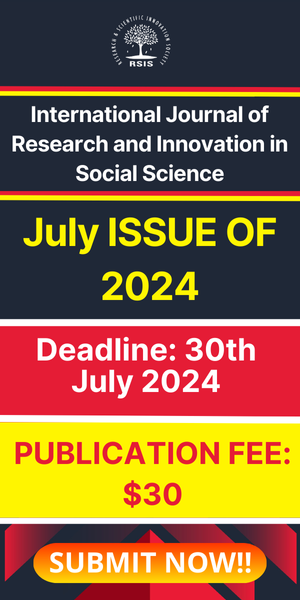Peer Sexual Harassment in Zimbabwe State Universities: A Qualitative Exploratory Study
- September 24, 2021
- Posted by: RSIS
- Category: IJRISS
International Journal of Research and Innovation in Social Science (IJRISS) | Volume V, Issue IX, September 2021 | ISSN 2454–6186
Peer Sexual Harassment in Zimbabwe State Universities: A Qualitative Exploratory Study
Daniel Mawere
Midlands State University, Gweru, Zimbabwe
Abstract : The study aimed at exploring and understanding undergraduate female students’ experiences of sexual harassment by male peers on and around university campuses. The hegemonic masculinity perspective and the socio-cultural model combined to inform the study. The population of the study consisted of a purposive sample of 20 female undergraduate students in two state universities. Qualitative in-depth interviews were done to obtain understanding of how peer sexual harassment was experienced by undergraduate female students. Data was collected through one-on-one audio recorded semi-structured interviews. Analysis of data was conducted using a narrative approach. Peer sexual harassment, perpetrated by male students, was a reality in the lives of female undergraduate students. Universities need to invest their efforts in addressing peer sexual harassment. Despite the fact that sexual harassment of female undergraduate students was taking place at the two state universities, victims seldom reported. Undergraduate female students need to be empowered to become more aware of the nature and extent of sexual harassment. A decrease in peer sexual harassment incidences is realizable if universities improve aspects of their climate and culture. The is need for counselling of victims in order to mitigate the negative impact of peer sexual harassment.
Key terms: harassment, sexual harassment, female students, peers, sexual violence.
I. INTRODUCTION
Sexual harassment of female undergraduate students by male students has become a topical issue in the corridors of several university campuses worldwide. In these institutions, large numbers of young women come into contact with young men in both private and public settings and at various times within the campuses. These vast numbers of young adults live independently and in close proximity to each other for the first time (Miller,2018). Given the presence of sexual harassment in the corridors of these campuses, the campuses are no longer safe havens for most female students as they are exposed to this phenomenon on a regular basis. In other words the existence of sexual harassment in these institutions impacts negatively on the female undergraduate students’ wellbeing and career development (Napolitano, 2015). Lack of understanding and awareness of what comprises sexual harassment makes the female undergraduate students easy targets of male sexual harassers.


